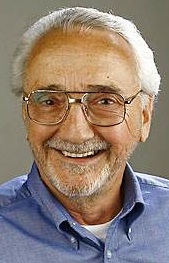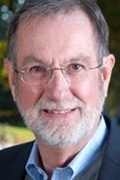 |
MARK MENDIOLA Reports |
A few years ago, the Heinz frozen food plant in Pocatello employed more than 800 who worked its packaging lines, eclipsing Union Pacific Railroad, the J.R. Simplot Co. and ON Semiconductor as the Gate City’s largest private employer.
Heinz’ recent announcement that it would close its imposing factory on Pocatello’s north end near the Quinn Road overpass and terminate its remaining 410 employees within five to eight months stunned the community, sending shock waves throughout Bannock County.
That bad news came on heels of the shutdown of the $700 million Hoku polysilicon plant in Pocatello. A bankruptcy judge recently blocked that plant’s sale to JH Kelly Inc., the plant’s Longview, Wash.-based general contractor, which bid $5.27 million for the abandoned complex and says it is still owed $25 million for its work on the project.
The entire Hoku plant will be re-auctioned onsite on Dec. 17. Its fair market value has been set at between $6.25 million and $35 million. The plant’s owner has filed for Chapter 7 bankruptcy and owes an estimated $1 billion to creditors. Once operating, the plant was to initially employ 200 and eventually boost its payroll to 400 -- or equivalent to the number now employed at the Heinz plant on the opposite side of town.
That Pocatello plant is one of three Heinz plants to be closed by the summer of 2014. The others are at Ontario, Canada, where 740 work, and Florence, S.C., where 200 are employed. Heinz plans to add 470 employees at existing plants in California, Iowa, Ohio and Canada, bringing its total work force in the U.S. and Canada to 6,800 hourly and salaried workers.
While displaced Pocatello Heinz employees will get severance benefits, outplacement services and other support, that’s little comfort to some who have worked at the plant for decades, stemming back to when it was owned by Kraft and Ore-Ida Foods. The unexpected shutdown is devastating for many of them and a major blow to Pocatello’s economy.
Kraft Foods built its first Pocatello cheese factory and warehouse along the Portneuf River in 1924, well east of Simplot’s existing phosphate fertilizer plant. By 1955, production at Kraft’s three-story structure on Kraft Road began to wind down, not far from Great Western Malting’s existing plant, which is east of the Hoku plant.
In 1967, Kraft Inc. started constructing its 450,000-square-foot plant where Heinz now operates and abandoned its old site along Kraft Road. In April 1989, 500 were working at the processed cheese plant when Kraft announced it would move operations to Tulare, Calif., after operating in the Gate City for some 65 years. Kraft had hoped 80 percent of its Pocatello workers would move to California, but only about 10 percent opted to do so, preferring Southeast Idaho’s much lower cost of living and other amenities.
By May 1989, only a month after Kraft’s bombshell announcement, it was disclosed that Boise-based Ore-Ida Foods Inc. had taken an option to buy the Kraft property to process low-calorie entrees and frozen potato products.
To their credit, Idaho Gov. Cecil Andrus and Commerce Director Jim Hawkins hustled to dispatch a rapid response team to Pocatello to help soften Kraft’s gut punch to the greater Pocatello area and quickly fill the food factory.
By the end of March 1990, 150 Kraft workers were terminated after 50 laborers had been idled the previous February, leaving fewer than 50 distribution personnel before Ore-Ida took over the plant. Weight Watchers low calorie meals were among the main products churned out after Ore-Ida took over the plant.
Famous for its Tater Tots, the Ore-Ida brand was acquired by the H.J. Heinz Co. in 1965. Its division headquarters was in Boise until 1998-99 when a new frozen foods division was created in Pittsburgh, Pa. At that time, 235 of the 320 employees of Ore-Ida's Boise HQ lost their jobs and 150 Weight Watchers plant workers in Pocatello were cut.
There have been telltale signs in recent years that production at the Pocatello Heinz plant has not been kept at full capacity as a steady drumbeat of layoffs sliced and diced employment by 50 percent.
In September 2009, 65 Heinz employees were let go. Last February, 80 workers were terminated as Heinz ended its TGI Fridays frozen meals line. The number of employees has plummeted from an 800 peak to its 400 level now. It’s been estimated that the Heinz plant shutdown will adversely impact another 200 people indirectly, worsening Pocatello’s unemployment rate.
In August, the city’s jobless rate stood at 7.8 percent, the highest of Idaho’s 11 largest cities. The Idaho Department of Labor on Friday, Nov. 22, disclosed that the Gate City’s unemployment rate declined from 7.7 percent in September to 6.9 percent in October. (more…)






